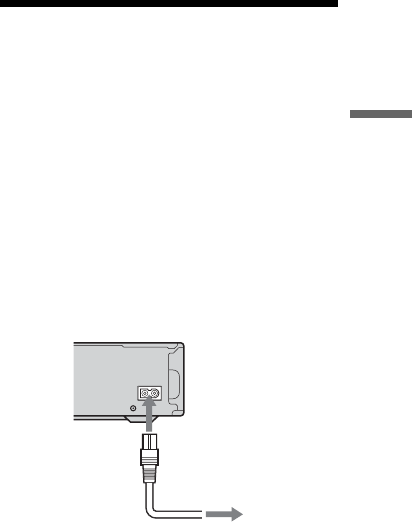
21
Hookups and Settings
z Hint
For correct speaker location, see the operating
instructions supplied with the connected components.
b Notes
• Do not connect your TV’s audio output jacks to the
LINE IN (R-AUDIO-L) jacks at the same time. This
will cause unwanted noise to come from your TV’s
speakers.
• In the connection A, do not connect the LINE IN (R-
AUDIO-L) and LINE OUT (R-AUDIO-L) jacks to
your TV’s audio output jacks at the same time. This
will cause unwanted noise to come from your TV’s
speakers.
• In the connection B, after you have completed the
connection, make the appropriate settings under
“Audio Connection” in “Easy Setup” (page 25).
Otherwise, no sound or a loud noise will come from
your speakers.
• With the connection B, the surround sound effects of
this recorder cannot be used.
• When you connect the recorder to an AV amplifer
(receiver) using an HDMI cord, you will need to do one
of the following:
– Connect the AV amplifier (receiver) to the TV with
the HDMI cord.
– Connect the recorder to the TV with a video cord
other than HDMI cord (component video cord,
S VIDEO cord, or audio/video cord).
*1
Manufactured under license from Dolby Laboratories.
“Dolby” and the double-D symbol are trademarks of
Dolby Laboratories.
*2
“DTS” and “DTS Digital Out” are trademarks of
Digital Theater Systems, Inc.
Step 5: Connecting the
Power Cord
Connect the supplied power cord to the AC IN
terminal of the recorder. Then plug the recorder
and TV power cords into an AC outlet. After you
connect the power cord, you must wait for a
short while before operating the recorder.
You can operate the recorder once the front panel
display lights up and the recorder enters standby
mode.
If you connect additional equipment to this
recorder (page 28), be sure to connect the power
cord only after all connections are complete.
~AC IN
to AC outlet
to AC IN
1
2


















